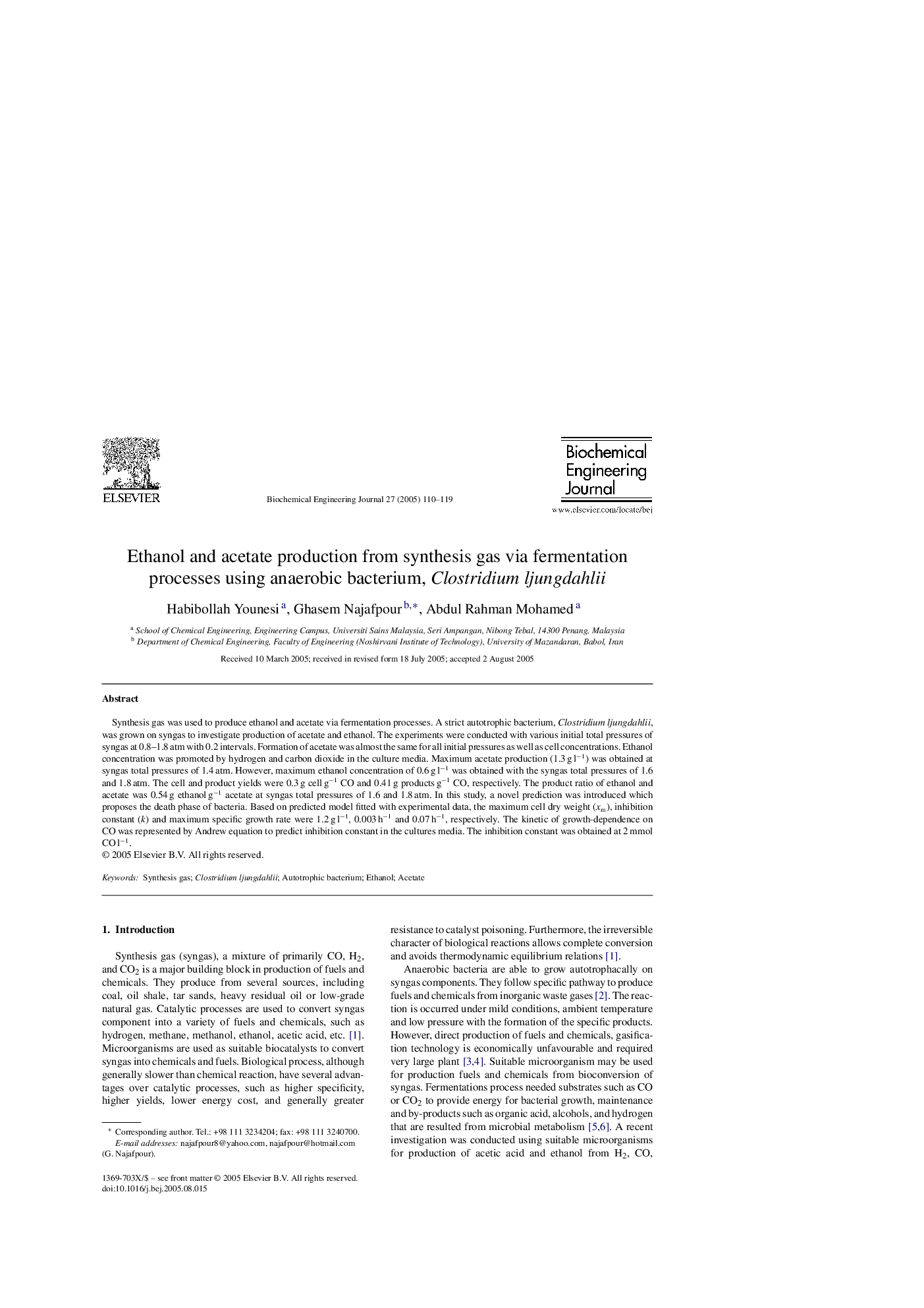| Article ID | Journal | Published Year | Pages | File Type |
|---|---|---|---|---|
| 10160860 | Biochemical Engineering Journal | 2005 | 10 Pages |
Abstract
Synthesis gas was used to produce ethanol and acetate via fermentation processes. A strict autotrophic bacterium, Clostridium ljungdahlii, was grown on syngas to investigate production of acetate and ethanol. The experiments were conducted with various initial total pressures of syngas at 0.8-1.8 atm with 0.2 intervals. Formation of acetate was almost the same for all initial pressures as well as cell concentrations. Ethanol concentration was promoted by hydrogen and carbon dioxide in the culture media. Maximum acetate production (1.3 g lâ1) was obtained at syngas total pressures of 1.4 atm. However, maximum ethanol concentration of 0.6 g lâ1 was obtained with the syngas total pressures of 1.6 and 1.8 atm. The cell and product yields were 0.3 g cell gâ1 CO and 0.41 g products gâ1 CO, respectively. The product ratio of ethanol and acetate was 0.54 g ethanol gâ1 acetate at syngas total pressures of 1.6 and 1.8 atm. In this study, a novel prediction was introduced which proposes the death phase of bacteria. Based on predicted model fitted with experimental data, the maximum cell dry weight (xm), inhibition constant (k) and maximum specific growth rate were 1.2 g lâ1, 0.003 hâ1 and 0.07 hâ1, respectively. The kinetic of growth-dependence on CO was represented by Andrew equation to predict inhibition constant in the cultures media. The inhibition constant was obtained at 2 mmol CO lâ1.
Related Topics
Physical Sciences and Engineering
Chemical Engineering
Bioengineering
Authors
Habibollah Younesi, Ghasem Najafpour, Abdul Rahman Mohamed,
